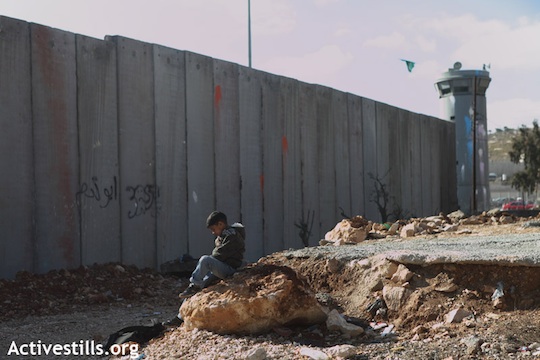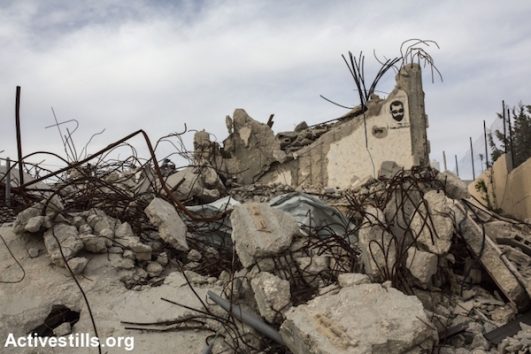Israel can either choose to undo the apartheid reality or face what apartheid breeds — resistance.
By Marzuq Al-Halabi

A country founded on the idea of segregation between peoples and communities will always have to deal with demographics. A country founded as the result of conquest and colonization of indigenous people and their land will, by necessity, be preoccupied with demographic questions. Even a country that has not successfully actualized the idea of segregation will be forced to deal with demographics, too. The state of Israel, in all three of the above ways, is such a country.
Perhaps the recent Israeli preoccupation with the demographics of the land between the river and the sea stems from political reasons — an attempt by opponents of the right-wing governing coalition to disrupt the Right’s attempts to de jure annex the occupied territories, though they have long been annexed de facto. But perhaps the preoccupation this time is genuine. Israel is facing a changing strategic variable: the demographic parity between Jews and Arabs between the river and the sea.
This demographic parity takes on a new meaning in a political reality where the Green Line has been erased and talk of annexing the West Bank is on the rise. Israel proper — excluding the occupied territories — could deal with an Arab minority of 20 percent of the population. The combination of this minority with the Palestinians in the West Bank, however, creates a new reality: Palestinians comprise 40 percent of the population on both sides of the Green Line. And if one includes the residents of the Gaza Strip, there is clear demographic parity.
Some look at these numbers and round up — it’s 50:50, they say. Others try to minimize the “demographic threat” posed by the Palestinians by citing other figures. And there are those who will argue with you over birth rates and death rates, the number of children, the number of youth, and more within each population to strengthen their own claims and weaken those of their opponents.
Regardless, the question for Israel remains: after defeating the Palestinians on the political, economic, military, and cultural fronts, what will Israel do in response to the new demographic figures? Or, to put the question more simply: what will Israel do to address its shrinking strategic advantage in the face of demographic parity?
The founding of Israel, which is celebrating its 70th year of independence, involved the removal of the majority of the Palestinian people from their homeland and the destruction of Palestinian society. Numerous injustices befell the Palestinian people before Israel’s founding and after. The Palestinian tragedy is ongoing, as Israel continues to deal with the demographic question through population transfers, the uprooting of Palestinians from their homes, and “Judaization” of the land.
Israel, if we judge according to what is actually happening, is an apartheid state par exellance. “Economic peace”—how Israeli officials describe the current arrangement in the West Bank—is simply a euphemism for apartheid. “There is no Palestinian partner for peace” is an empty excuse for those who want to maintain the apartheid reality.
What does apartheid look like in the Israeli context? With the construction of the separation barrier—intended to strengthen Israel’s control over the area and not any other reason—300,000 Palestinians were displaced or separated from the families or their land. At this very moment, in the Jordan Valley, Israel is attempting to remove entire Palestinian villages. Freedom of movement for millions of Palestinians is dependent on the goodwill of 19-year-old soldiers at checkpoints in the West Bank. People are being denied their right to travel, learn, work their land, receive medical treatment, and access to running water and electricity. Almost every day, Palestinians are killed or arrested, their houses destroyed. The goal of the Israeli regime is to entrench Jewish control over all the land between the river and the sea. And only though terrible, daily acts of violence and destruction can one nation exert control over another.

It is my humble opinion that the same frightful legislative project, ongoing here for more than decade, will attempt to provide a cure for the new demographics—new legislation that will codify apartheid, that will attempt to remove Palestinians in Israel from the political sphere. And I must point out here that it is not just Likud-led governments, the Right, or the settlers that have led this effort.
But let’s consider an entirely different idea: the notion that societies and peoples can make alternative choices. Let’s say it is time to admit there is indeed demographic parity here in Israel/Palestine. And instead of addressing it through population transfers, evictions, and the violent extension of control, Israel chooses the way of peace between the two peoples spun together for over 50 years—to recognize the demographic parity, and to begin to normalize its relationship to it. And instead of calling it a demographic tie—a threatening name—let’s call the program an initiative “for fully living together.” The two sides living in this shared space will mutually agree to reconcile and achieve transitional justice, which, in time, will become corrective justice—because there can be no historic justice.
There already exists between the river and the sea a model for living together, one way or another. The task that remains is to deepen this way of life, and to make it the central goal of a country of two peoples. Such an approach will enable numerous solutions to problems such as the settlements, unrecognized Bedouin villages, the question of refugees within Israel and others.
I see hope alongside the deepening apartheid. But I fear that the choice about what to do will be out of Israel’s hands—and in the hands of the American president, eager for conflict, Evangelicals, Republican Jewish communities, the Right in Europe, and others. Israel today enjoys support from these groups that are deeply involved in what happens there. My worry is that these forces will meddle to ensure that the result is apartheid, which fits their ideology and their racist, Orientalist view of the peoples of the region.
Under apartheid, like in South Africa, oppressed people will always attempt to resist. And resistance will look like the great mess that we have been witnessing. Under apartheid, this great mess will happen every day, week, or month in numerous places at the same time. Frightening, no?
Marzuq Al-Halabi is a jurist, journalist, author. He writes regularly for Al-Hayat. This post also appears in Hebrew on Local Call.
